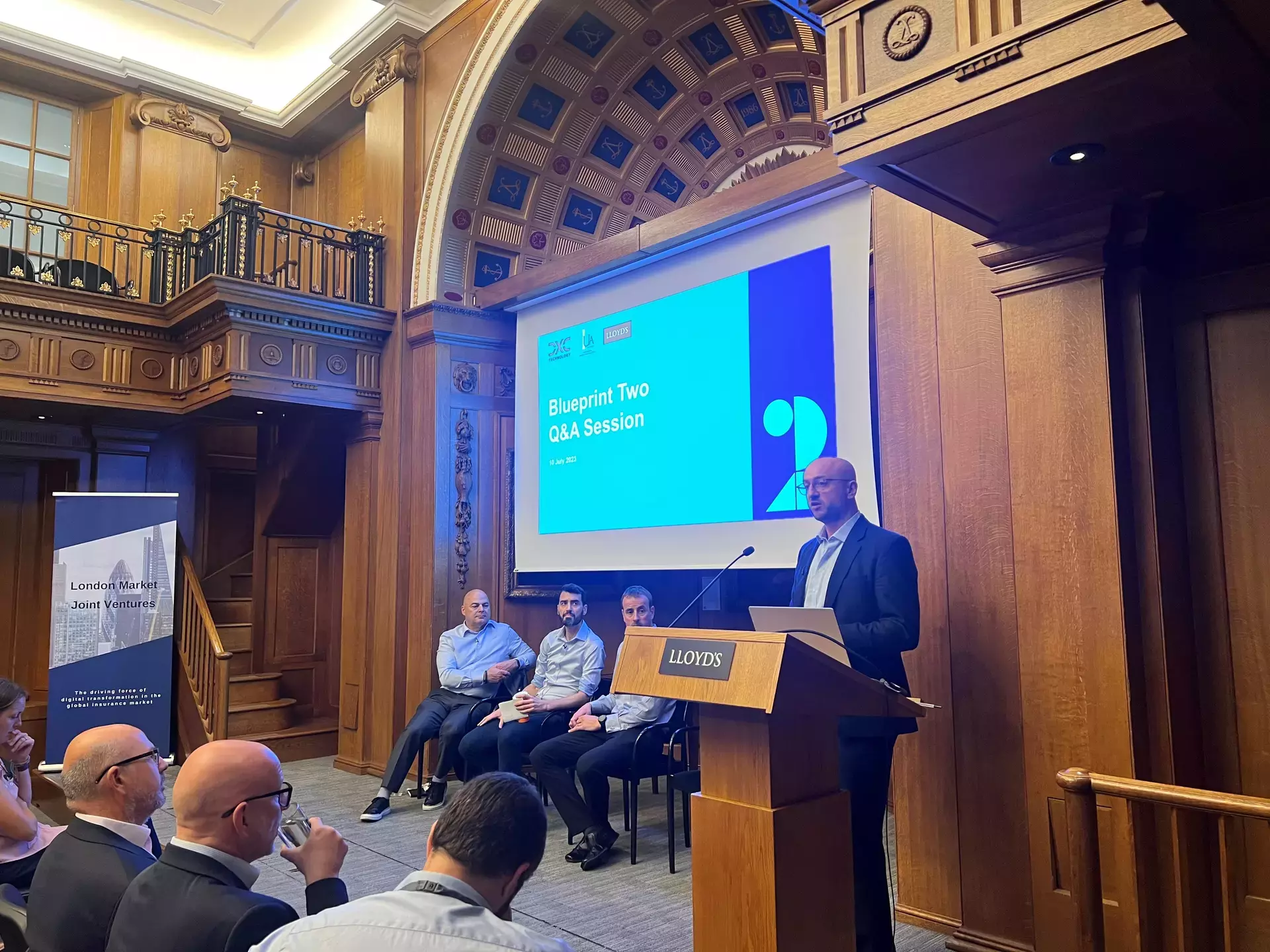
On Monday 10 July, Lloyd’s and Velonetic, hosted two Q&A sessions to provide the market with an opportunity to answer any questions on the back of the working session held on 19 June.
We gave an overview of the key messages that were delivered on 19 June, particularly that the programme is on track to deliver the technology in June 2024, and that market participants need to take action to be adoption ready for cut over centered around technology, process and people. Training, testing, and onboarding will be crucial to enable market firms to be ready. Lots of questions were asked throughout in an informal, engaging setting; please find a link to the slides and the recordings from both sessions below.
The event included updates from Matt Unsworth (Lloyd’s), Ruan Ebersohn (DXC), Alvaro Montenegro (Velonetic) and Bob Verber (Velonetic)
Further detail relating to the question asked in the second session on 10 July 2023.
Can organisations adopt phase one and phase two digital services separately?
The classification of a transaction as phase one or phase two digital services is largely determined by two factors:
The submission channel (e.g. EBOT, LPAN, LIMCLM, Portal); and the subscribed services/channels for all participants in the slip.
We hope the following practical examples are helpful.
-
A CDR + EBOT premium submission by a broker with all carriers in the slip subscribed to CDR + EBOT is considered a fully digital phase two transaction.
-
A CDR + EBOT premium submission by a broker with some carriers subscribed to CDR + EBOT and some subscribed to EDIs is considered a phase one transaction.
-
An MRC + LPAN premium submission by a broker with all carriers in EDI is considered a phase one transaction.
-
An ECOT/EBOT claim submission by a broker with some carriers in ECOT/EBOT and some carries in Writeback or CWT or EDI is considered a phase one transaction. This is why we say that each transaction is treated differently.
Please note: A very important constraint is that organisations that subscribe to certain services, for example EBOT and EDI, will receive all the possible messages in these channels. As an organisation, you will not be able to choose if transaction A is sent to you as an EBOT and transaction B as an EDI message, or if Class of Business Marine is sent as EBOT and Class of Business Property is sent as an EDI. Organisations will receive the totality of possible messages in their chosen channels.
The best course of action, as mentioned in the session, is to reach out to your Engagement Partner with your specific case so that we can respond accordingly. Interoperability among message types and permutations of transactions inputs/outputs are fairly complex, so it is best to answer precisely to a specific case instead of a blanket high-level statement that may miss important nuances.
Overall, the cleanest, simplest, and most practical solution is to adopt phase two full digital services in a single block for all your business. If you require further clarification on this please contact your Engagement Partner. Please visit the single Engagement Team page on the Blueprint Two website for contact details.
